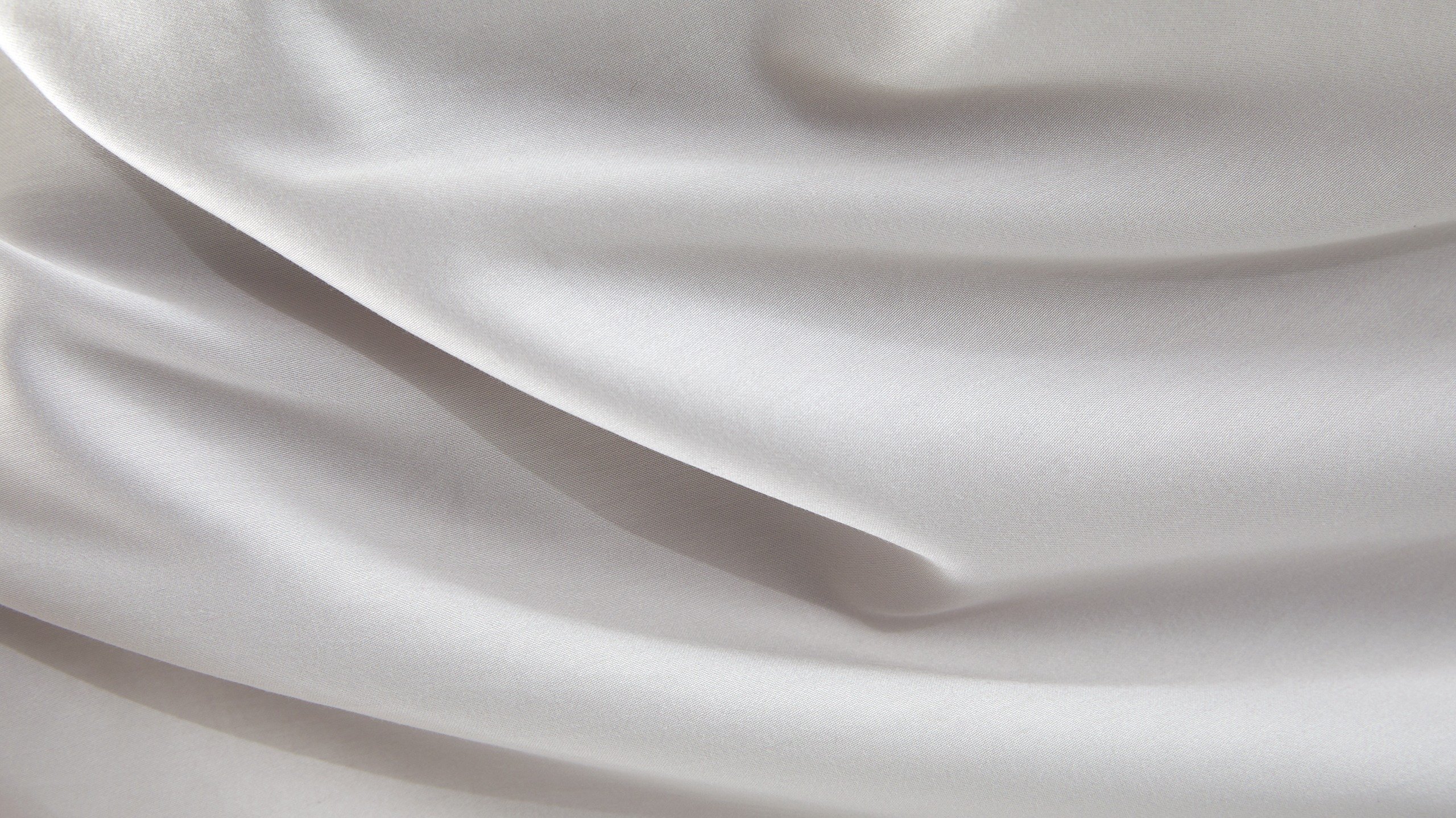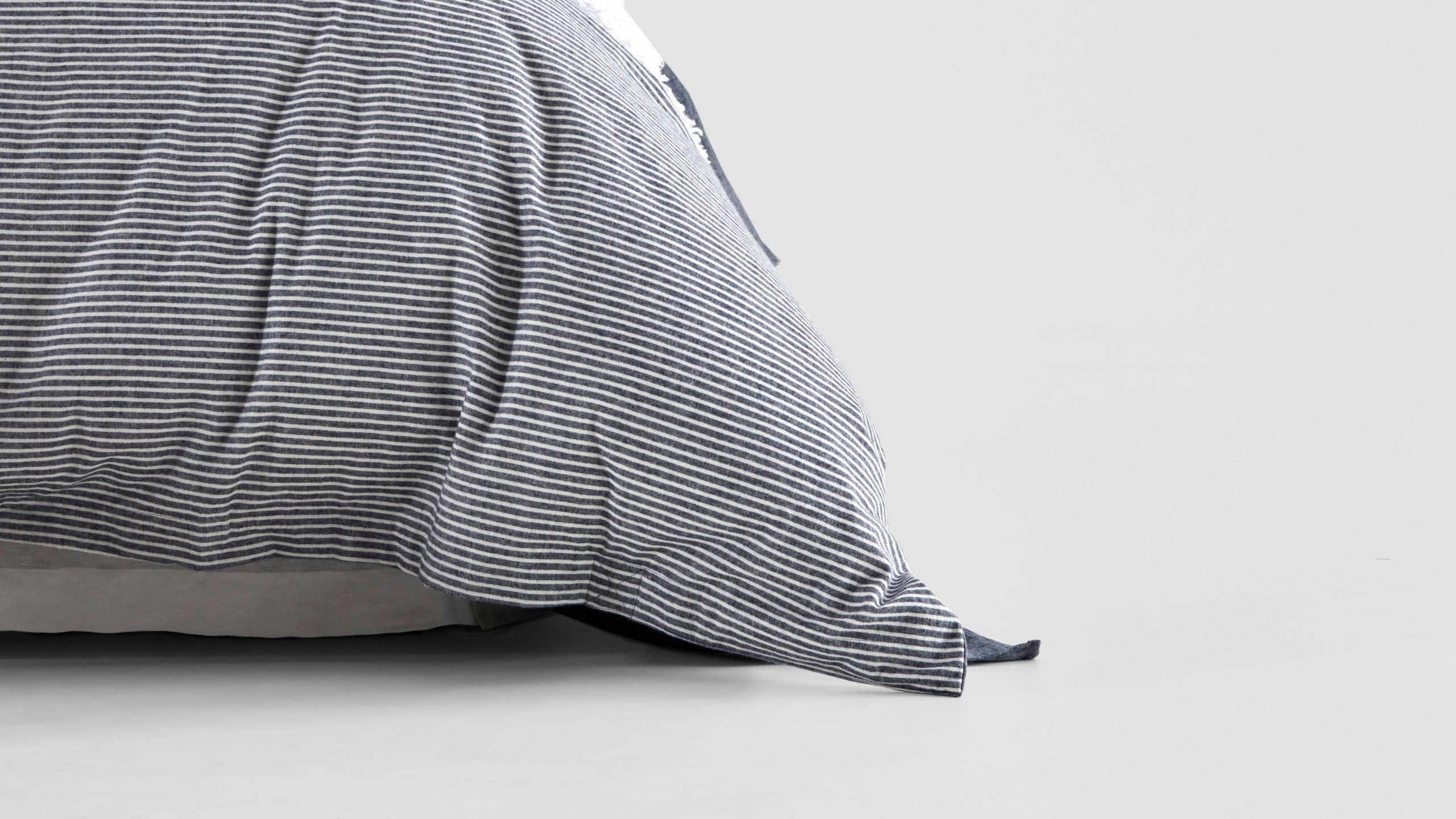Buying Guide
The ultimate guide to buying sheets
It’s easy to imagine a perfect bed. Breathable fabrics, that feel exquisitely soft and naturally textured. Sheets neatly tucked in (not too loose, not restrictively tight). Ample sizing to neatly envelop you night after night.
Yet even when we can imagine such a bed, we’re faced with a quandary. We jump online to start researching, only to suddenly stumble down a rabbit hole. Suddenly there are too many decisions to be made. There’s complex industry jargon, a plethora of foreign fabrics and unsubstantiated claims that simply don’t seem feasible (and more than often, aren’t).
That elusive dream bed slips further and further away. You’re exhausted, frustrated and still none the wiser.
Well, we’re here to help. In the only honest, transparent way we know how we’ll help you get to grips with material, weave, treatment, ply and more. We’ll only tell you what you need to know, without any hyperbole, smoke or mirrors. We’ll break down the buzzwords that other retailers like to throw about carelessly; ‘thread count’ and ‘Egyptian cotton’ often isn’t quite what they’d have you believe.
You’ll be a bed-making expert before you know it.
Let’s start at the very beginning: what is a set of sheets?
A set of sheets includes:
One top sheet (to go in-between you and your doona)
One fitted sheet (to go in-between you and your mattress)
1 or 2 (or 3) pillowcases
What is standard bed sheet sizing?
Fitted - 91 x 191 x 40cm
Flat - 180 x 275cm
Fitted - 107 x 203 x 40cm
Flat - 200 x 275cm
Fitted - 137 x 191 x 40cm
Flat - 230 x 275cm
Fitted - 152 x 203 x 40cm
Flat - 245 x 275cm
Fitted - 183 x 203 x 40cm
Flat - 275 x 275cm
Fitted - 203 x 203 x 40cm
Flat - 300 x 275cm
Most of the time, if you can whip the tape measure out to check the size of your mattress, that’ll be enough to guide you when buying sheets. Make sure you also measure the depth too, as you might need to get an extra deep size sheet. Don’t forget to account for accessories like mattress toppers, too.
The need-to-know vocab to pick the best quality bed sheets
Sheet material - so you know what fibre your sheets are woven from.
Weave - this is the technique used to make the material. Common weaves are muslin, percale, twill or sateen (there’s more help decoding these just below).
Thread count - how many threads fill a certain area of your bed sheet. In Australia, we generally measure 10 square cm. Although high thread count is often used to signify quality, the ideal thread count depends on the type of material being used. Simply put, despite popular opinion, higher thread count does not necessarily equal better quality.
Other material descriptions to look out for are:
Combed cotton
Plied yarn
Material finishes
Sheet material
Really, there’s no ‘right’ answer when it comes to the question of the best sheet material. The right choice for you all depends on your personal preferences.
What types of materials are commonly used in sheets?

Linen
Linen is wonderfully breathable and wicks moisture away easily. Linen sheets keep you cool even on the hottest days. The weave of the material allows airflow and the fibres themselves absorb moisture to keep you dry and comfortable. Quality of linen can be incredibly variable though. The best quality linen fabric is woven from start to finish in Europe. Many companies might use Belgian or French flax, yet they leave out how the material is woven into yarn and fabric in China or India where quality standards aren’t so high. Nearly all flax is grown in Europe so it becomes a bit of a marketing ploy rather than demonstrating true (long-lasting) quality.
Cotton
One of the most popular choices when it comes to sheets, cotton helps wick away moisture from your skin. Cotton fibres vary from short staple to long staple, which refers to the length of the individual fibre. The longer the cotton staple the better quality sheets will be.
Egyptian Cotton
Strong, breathable and lustrous, Egyptian cotton has extra long fibres and is only grown natively in Egypt. Synonymous with luxury and hugely popular for it, Egyptian cotton can be used rather deceptively in marketing. Often sheets sold as Egyptian cotton only contain a very small percentage of actual Egyptian cotton, or sometimes a different type of cotton altogether. It’s important to check the label and trust your retailer implicitly when buying this type of sheet. If the price seems too good to be true, it probably is.
Pima or Supima Cotton
Pima cotton sheets are grown from the same type of cotton as Egyptian cotton sheets but in America instead of Egypt. The difference in climate affects how the cotton grows and its quality. While Pima is high-quality, Egyptian is considered to be the more premium choice. Supima is essentially Pima cotton being sold under the Supima brand. This means assured quality, however you will pay an inflated price.
Cotton Blend
Cotton blend sheets mix cotton with other materials to bring the benefits from both natural and synthetic materials. Synthetic fibres are more affordable, durable and wrinkle resistant whilst cotton fibres are breathable and comfortable. These benefits are not usually as pronounced as in non-blend sheets, however.
Polyester
This synthetic fibre makes sheets durable and stain resistant. They’re easy to care for and resist wrinkling and shrinking. As a synthetic material, however, polyester doesn’t absorb water (or sweat) effectively, so it isn’t good for regulating body temperature. Polyester can irritate the skin, so it’s generally considered to be the least comfortable material for bed linen. People used to sleeping in higher quality sheets might feel like they are sleeping under plastic.
Bamboo rayon
Rayon is a chemically treated material created from bamboo. Temperature regulating, it’s suitable for any season. The absorbent weave helps to wick away moisture from your body, so you stay dry and comfortable all night. Bamboo sheets tend to wrinkle easily and as they’re a trendy material at the moment, you may end up paying more than you really should.
Silk
Luxurious on the skin, silk is also a great choice if you’ve got allergies or skin conditions. Real silk requires quite careful and attentive care, including hand washing for the first few times you use the sheets. After that, they’ll need washing on cool and a delicate cycle with only a gentle detergent.
What are the different types of fabric weave?
You can’t underestimate the importance of fabric weave. It affects the way a sheet feels, looks and how long it’s going to last.

Percale
Most commonly cotton, this is a plain-weave fabric that’s higher than 220 threads per square 10 cm. It’s lightweight and closely woven, which produces a smooth finish and a crisp feel. The better quality the cotton, the better your sheets will be.

Sateen
Not to be confused with satin (another type of weave). Sateen is where the thread is woven over three and under one and then alternates. It makes an extremely soft bed sheet with a smooth and lustrous feel, not too dissimilar to the feel of satin.

Jersey knit
These sheets have the same cotton knit as wonderfully comfortable t-shirts. The stretchy softness makes them incredibly soothing to sleep within. Again, the better the quality of the cotton used the better the jersey sheets feel. The weight of the jersey knit will also affect the feel and wear of these sheets.

Flannel
Usually made from 100% cotton, flannel is a medium-to-heavy weight sheet material. With a brushed finish on one or both of its sides, it has a comforting and soft feel. This makes flannel ideal for winter as the soft, fuzzy weave holds in body heat to keep you cosy.
What else do you need to look out for?
Combed Cotton - a ‘combing’ manufacturing method means the fibre becomes stronger, softer and less likely to fray than regular cotton. This makes combed cotton slightly more expensive than regular cotton sheets. Due to its benefits, combed cotton is becoming more popular with sheet manufacturers.
Plied yarn - plies are individual strands of yarn that are worked together. To ply yarn, individual singles are spun together with a twist in the opposite direction from how the singles were spun. This gives plied yarn more strength, durability and consistency than singles yarn.
Fabrics usually range from one-ply to three-ply. The number of yarns twisted together to make a single thread in fabric makes the difference. Two-ply fabrics have a tighter weave for example and are heavier than single ply.
Finishes - these are treatments applied after the fabric has been woven, such as mercerizing, shrinkage control or wrinkle resistance. It’s wise to be wary of wrinkle resistance and easy care, as these are achieved by spraying plastic on the cotton sheets.
Mercerizing helps to improve the shape of the cotton fibres and adds strength, lustre and affinity for dyes.
Shrinkage control keeps the shrinking to no more than 1 to 2 per cent. At Abode, however, we expertly measure our sheets based on how much we know the bedding will shrink within the first few washes.
It might seem like a lot to consider, but with a little extra time reading labels and researching, you’ll find sheets that will be worth the investment and keep you in comfort for years to come. Or, trust the experts to do the research for you. At Abode we’ve worked with elite, reliable European suppliers for many years for this very reason; giving our customers the finest quality they’ll enjoy night after night.
A little word about thread count
The problem with thread count is that it’s come to be widely considered as the most important measure of quality when choosing bed sheets. The reality is, thread count has almost nothing to do with the quality of the sheets. What’s more important is the quality of the cotton used (length of the staple), the quality of the spinning of the yarn (Europeans have the highest standards, Italians best of all), then the quality of the weaving (as fine threads are very hard to weave into fine fabric).
The American standard for thread count is the number of threads that occupy one square inch whilst in Australia it is more common to use 10 square centimetres. Without an international standard (or any standards for that matter), claims about thread count are more often than not, meaningless. The best thread count for cotton sheets is about 500 thread count. Anything above doesn’t make the sheets any better and in most cases isn’t even very accurate.
Thread count is therefore an unreliable and overly simplistic way to judge how luxurious sheets are.
When you think about it, there’s only a certain number of threads that can fit in a defined area, but less reputable sheet companies offer bed linen with thread counts in the thousands. Manufacturers also have tricks that play to this marketing ploy rather than focusing on comfort or quality.
Don’t fall for the ‘bigger is better’ mentality when it comes to thread count. Instead, take all the factors into consideration when purchasing your sheets and make sure you trust your retailer.
For more information see truthaboutthreadcount.com